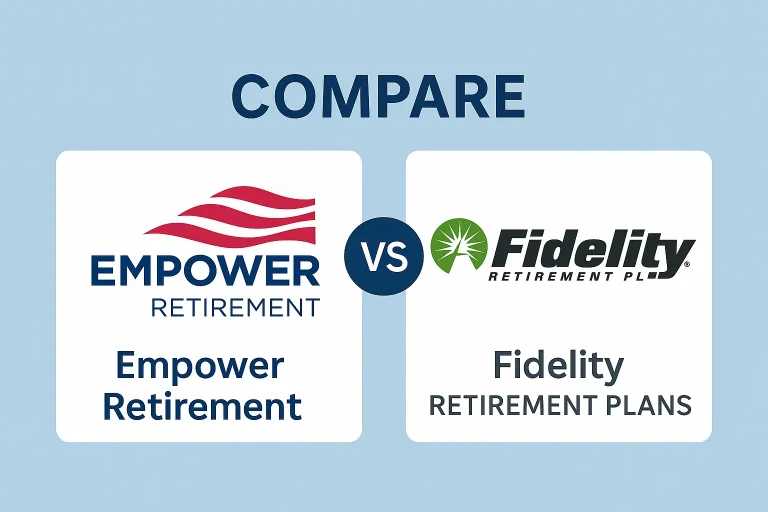Supplemental Executive Retirement Plan Guide
A Supplemental Executive Retirement Plan (SERP) serves as a valuable tool for companies seeking to enhance their executive retirement benefits. These specialized, non-qualified plans are designed specifically for high-level executives, allowing organizations to provide significant executive compensation without needing IRS approval. The SERP can be tailored to meet the unique needs of key executives, making it an attractive option for businesses keen on retaining top talent while also managing their financial liabilities.
Typically funded through cash-value life insurance policies or various cash flows, SERPs defer taxes on earnings until benefits are paid. Upon retirement, executives must recognize these withdrawals as ordinary income, thus balancing immediate tax deductions for companies when benefits are disbursed. By understanding the essential components and benefits of a SERP, employers can strategically navigate executive compensation while ensuring their most valued leaders are rewarded appropriately for their contributions.
What is a Supplemental Executive Retirement Plan?
A supplemental executive retirement plan (SERP) is a specialized form of compensation designed to enhance the retirement income of high-level executives. These plans are typically non-qualified and serve the purpose of providing additional financial security beyond what standard retirement options, such as 401(k) plans, can offer. In a competitive business environment, a SERP acts as a strategic tool for retaining key personnel by offering long-term incentives.
Definition and Purpose
The primary focus of a SERP is to support High Compensated Employees (HCEs) who may be subject to IRS restrictions, limiting their contributions to traditional retirement accounts. Unlike 401(k) plans, which have strict maximum contribution limits, SERPs allow for significant flexibility in how much executives can save for retirement. This flexibility makes a SERP an essential complement to standard retirement plans, particularly for those who have maxed out their contributions.
Key Features
Several characteristics distinguish a supplemental executive retirement plan from typical retirement savings options. Notably, SERPs:
- Do not impose annual contribution limits.
- Allow for withdrawals without penalties before age 59½.
- Permit employees to defer income taxes until distributions are made.
- Create personalized terms that can offer in-service distributions for immediate financial needs.
- Encourage retention through vesting schedules requiring executives to remain with the company for a specific period.
Differences from Standard Retirement Plans
While both SERPs and standard retirement plans serve the common goal of providing income during retirement, they exhibit significant differences:
| Feature | SERP | Standard Retirement Plans (e.g., 401(k)) |
|---|---|---|
| Contribution Limits | No limits | Set by the IRS (e.g., $22,500 for 2023) |
| Tax Treatment | Income tax deferred; FICA and FUTA taxes apply upon vesting | Tax deferred until distributions are taken |
| Withdrawals | Possible without penalties before age 59½ | Penalties for withdrawals before age 59½ |
| Minimum Distributions | Do not begin until age 73 | Also begin at age 73 |
These differences highlight why SERPs are increasingly utilized by companies aiming to attract top talent while providing tailored retirement benefits. With customized options and flexible terms, a SERP becomes an invaluable asset for executives seeking to enhance their financial security in retirement.
Benefits of a Supplemental Executive Retirement Plan
A Supplemental Executive Retirement Plan (SERP) offers several compelling advantages for both executives and organizations. One major benefit is its ability to attract and retain top talent in competitive markets. High-caliber executives often seek comprehensive retirement savings for executives, and SERPs fill this gap, creating a more appealing benefits package that fosters loyalty.
Attracting and Retaining Talent
The competitive landscape for executive talent means organizations must leverage various strategies to retain key individuals. SERP advantages include offering supplemental income streams that executives cannot secure through traditional retirement plans due to contribution limits. These plans effectively close the retirement income gap that many top executives face, often ranging from 30% to 50% of their salary, further solidifying the organization’s appeal to prospective and existing leaders.
Tax Advantages for Executives
While SERPs do not provide immediate tax deductions for organizations, the deferred nature of the compensation allows executives to accumulate significant wealth without immediate tax liabilities. Executives can take advantage of the flexibility that SERPs offer, notably the ability to make unlimited contributions. As they withdraw funds during retirement, these amounts are taxed at ordinary income rates, making SERPs an attractive choice for executive retirement benefits.
Enhanced Retirement Income
Supplemental Executive Retirement Plans can substantially enhance the retirement income of executives. The structure allows executives to receive benefits based on a percentage of their high three-year average compensation, leading to a solid financial cushion in retirement. Many SERPs are designed to grow into millions of dollars, ensuring that the retirement savings for executives are not only robust but also tailored to individual financial goals.
Components of a Supplemental Executive Retirement Plan
A Supplemental Executive Retirement Plan (SERP) integrates distinct components to provide executives with tailored retirement solutions. Key elements like funding sources, vesting schedules, and payout options significantly influence the plan’s effectiveness and overall appeal.
Funding Sources
Companies typically finance a deferred compensation plan through several methods, including cash-value life insurance policies or utilization of current cash flows. The cash-value component is particularly beneficial, as it accumulates on a tax-deferred basis, ensuring that the company has sufficient funds when payouts are necessary. This mechanism backs the top-hat plan, which offers additional security to executives while they prepare for retirement.
Vesting Schedules
Vesting schedules play a crucial role in determining when executives gain full ownership of their deferred benefits. Various structures exist, such as graded vesting, which allows for gradual ownership over time, or cliff vesting, where executives receive full ownership after a specific period. These options impact financial planning significantly, aligning the interests of the company and the executive, further enhancing the SERP’s value as an incentive.
Payout Options
Flexibility in payout options is a defining characteristic of SERPs. Executives may choose how they wish to receive their benefits, including lump-sum payments or annuity distributions. Each option carries different financial implications, allowing executives to tailor their retirement strategy according to personal preferences and financial goals. This adaptability enhances the attractiveness of a supplemental executive retirement plan, making it a vital component in executive compensation strategies.
How to Design a Supplemental Executive Retirement Plan
Creating a successful Supplemental Executive Retirement Plan (SERP) involves a strategic approach that aligns with organizational goals while meeting executive compensation needs. This process begins with a clear understanding of objectives, regulatory requirements, and the customization for individual needs of key executives. Each of these elements plays a critical role in developing a robust SERP design that enhances both attraction and retention of top talent.
Identifying Objectives
The first step in SERP design is identifying the specific objectives for the plan. Companies need to clarify their intentions, which often revolve around retaining high-level executives and incentivizing performance. Recognizing executive contribution to the organization can guide the design, ensuring that the plan aligns with the company’s broader strategic goals.
Regulatory Considerations
Understanding the regulatory landscape is essential for SERP design. Compliance with the Employee Retirement Income Security Act (ERISA) and Internal Revenue Code (IRC) 409A is crucial to avoid penalties. These regulations impose limitations on plan design changes and dictate the tax treatment of nonqualified deferred compensation plans. Financial institutions, particularly, are leaning towards 457(f) plans, appreciating their flexibility in design while navigating these regulations.
Customization for Individual Needs
Customization for individual needs is vital in SERP design. Tailoring the plan allows organizations to address the unique requirements of each executive, including preferred payout structures and vesting schedules. With increasing turnover rates, especially among CFOs, flexible SERP design becomes a significant factor in maintaining leadership stability. With over 750 financial institutions under the guidance of Newcleus, which manages more than $12 billion in assets, organizations have access to expertise in effectively implementing customized plans. Structures such as hybrid plans can combine aspects of defined contribution and defined benefit plans, providing a balance of predictability and flexibility in funding.
Eligibility Criteria for Executives
Eligibility for Supplemental Executive Retirement Plans (SERPs) plays a crucial role in attracting and retaining top talent. Companies need to identify the levels of executives covered under these plans while carefully considering the minimum requirements that dictate who qualifies for such generous executive retirement benefits.
Levels of Executives Covered
SERPs typically target high-level positions within an organization. Options range from including only a single executive to offering plans to a selective group of executives within senior management. This strategic targeting enables companies to reward essential personnel without overwhelming corporate finances.
Minimum Requirements
Minimum requirements often include factors like job level and tenure within the company. Moreover, many organizations assess projected contributions to the overall success of the business. This ensures a merit-based approach where only deserving individuals receive the benefits of the SERP. Eligibility may hinge on individual performance metrics, reinforcing the significance of high achievement among executives.
Considerations for Eligibility
When determining eligibility, companies must evaluate multiple considerations, including compliance with IRS regulations and the Department of Labor criteria for “top hat” plans. The election to defer pay should occur before compensation is earned to avoid providing immediate taxable benefits. Organizations must strike a balance between attracting talent with competitive executive retirement benefits and maintaining financial sustainability across the business.
Legal and Tax Implications
Implementing a Supplemental Executive Retirement Plan (SERP) requires careful consideration of various legal and tax implications. Organizations must navigate the landscape of compliance with ERISA while understanding the specific tax treatment of benefits. Executives and their employers must stay informed about the obligations surrounding SERPs to avoid pitfalls that may lead to significant penalties.
Compliance with ERISA
SERPs often enjoy exemptions from ERISA regulations, enabling firms to establish and manage these plans more comfortably. Not being subject to ERISA can simplify many administrative tasks, allowing companies greater flexibility in tailoring plans to meet executive needs. Nevertheless, compliance with existing tax laws remains a priority. Failure to adhere to these regulations can lead to serious consequences for both the company and the executives involved.
Tax Treatment of Benefits
SERPs do not carry the tax-favored status associated with traditional retirement plans, such as 401(k) plans. Consequently, contributions made to SERPs do not provide immediate tax benefits. Despite this, employers can deduct benefits as business expenses when paid. It’s crucial to note that SERP taxation can significantly affect estate planning. If benefits exceed anticipated retirement needs, the increased income and estate tax liability for both executives and their beneficiaries may reach up to 73%. Estate tax rates can range from 37% to 55%, necessitating advanced strategies for managing liability.
Penalties for Non-compliance
Non-compliance with tax laws can lead to severe penalties, including retroactive taxes that may burden both the executive and the company. For instance, if an executive passes away before retirement, any remaining SERP amounts owed will face both income tax and estate tax implications. Ensuring meticulous record-keeping and adherence to all regulations is essential to mitigate risks associated with SERPs.
Case Studies and Examples
Analyzing actual SERP examples from various corporations provides valuable insights into best practices and potential pitfalls associated with executive compensation strategies. One illustrative case involves a craft beer business established for over 15 years. This corporation implemented a Supplemental Executive Retirement Plan to effectively address income shortfalls and enhance executive retention. They allocated $20,000 annually in premiums for 20 years, culminating in a total investment of $400,000. As a result, the executive received $102,034 annually for 20 years, leading to a total supplement of $2,040,680.
However, not all implementations are flawless. Certain companies have encountered challenges such as misunderstandings of vesting schedules and the implications of policy lapses. For instance, in the aforementioned case, if no loans are taken, the policy lapses at age 82, which poses a significant risk for planning. Furthermore, the company’s evolving workforce, which diminished from 20,000 employees to under 100, highlights the importance of adapting SERP structures to reflect organizational changes and employee tenure effectively.
A comparative analysis across industries reveals that SERPs are influenced by market conditions. For example, Company A’s savings plan, which matched 100% on the first 3% of employee contributions, contrasts sharply with Company B, which offered only a 3% match. Such discrepancies demonstrate the varying ramifications on employee retention strategies, as companies must navigate their financial capabilities and ensure that executives perceive their benefits as competitive. Ultimately, the successful implementation of SERPs hinges on thoughtful design, careful consideration of market dynamics, and a willingness to learn from past experiences.
Supplemental Executive Retirement FAQ
What is a Supplemental Executive Retirement Plan (SERP)?
A Supplemental Executive Retirement Plan (SERP) is a type of deferred compensation agreement specifically designed for high-level executives, providing them with supplemental retirement income upon meeting certain eligibility and vesting conditions.
What are the primary benefits of a SERP?
SERPs are instrumental in attracting and retaining top talent by offering enhanced retirement income. They also allow executives to accumulate wealth without immediate tax liabilities, as benefits are taxed only upon payment.
How does a SERP differ from standard retirement plans?
Unlike standard retirement plans such as 401(k)s, SERPs are non-qualified plans that do not provide immediate tax advantages. They also allow companies to selectively include eligible executives based on specific criteria.
What funding sources are typically used for SERPs?
Companies generally fund SERPs through cash flows, investment funds, or cash-value life insurance policies to ensure they can meet future payout obligations.
What types of vesting schedules are commonly used in SERPs?
Vesting schedules in SERPs may follow either graded or cliff vesting structures, which dictate when executives gain ownership of their deferred benefits, impacting their financial planning.
How flexible are the payout options in a SERP?
SERP payouts can be distributed as lump-sum payments or through annuity options, allowing executives to choose the method that best aligns with their retirement strategy.
What should companies consider when designing a SERP?
Companies should identify clear objectives related to executive retention, assess regulatory implications, and prioritize customization to meet individual executive needs, all while aligning with corporate strategies.
Who is typically eligible for a SERP?
SERPs generally target high-level executives, with eligibility determined by job level, tenure, performance metrics, and projected contributions to the organization’s success.
What are the legal and tax compliance issues associated with SERPs?
SERPs must comply with tax laws, as they lack the tax-favored status of qualified plans. Non-compliance can result in penalties and taxes, making accurate record-keeping essential.
Can you provide examples of SERP implementations?
Successful implementations of SERPs in Fortune 500 companies illustrate their effectiveness in enhancing executive retention and performance. Lessons from companies facing challenges can offer guidance for best practices.







